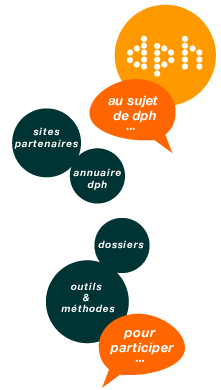Armed Conflict in Burundi : Experience as a woman
(Expérience d’une situation de conflit au Burundi, 1. Expérience en tant que femme)
05 / 1999
An armed conflict broke out in Burundi in October 1993. Although many of the reasons have not been expressed, the conflict was mostly due to two factors:
1. Ethnic: Hutu Tutsi antagonism
2. Partisan: above all the UPRONA party/the FRODEBU party
These two factors resulted in ferocious slayings on both sides. The insecurity that accompanied this violence led to considerable numbers of displaced persons in camps. When the Hutu rebels attacked, the Tutsi survivors regrouped and when the Tutsi army counter-attacked, the Hutu survivors regrouped further away. This led to antagonism between the camps whereas the victims they sheltered lived through the same suffering and misery. It was all the more unfair and sad as the victims of one camp had not been displaced by those of the other camp, rather they were all the victims of external players whose actions concerning them had not been asked for, and were taken on behalf of an ethnic group they had not asked to belong to. Most of the inhabitants of these camps were women and children !
I belonged to a group of women victims of the same armed conflicts and suspicion that decided to do something within the limit of our meager means for our sisters in need.
Conscious that we were ourselves the product of the same society in contradiction and that our will alone did not constitute a decisive tool for helping others, we called on external organizations for help to train us to settle conflicts pacifically. International Alert, Search for Common Ground and UNIFEM gave us their logistic support and instructors to teach us to listen, communicate, to convince deeply perturbed people, and also to understand a conflict before seeking to start to solve it. One week’s training was followed by six months practical work in-the-field before returning to evaluate the success and problems encountered. The training lasted two years, though our group continues.
The strategy in-the-field consisted in first identifying a Hutu camp and a Tutsi camp whose inhabitants previously lived together. Then, several times, the whole group, consisting of both Hutus and Tutsis, visited the women of each camp to become regulars and become accepted as friends. This period was also useful for identifying women leaders so we could win them over to our cause, thereby making allies who would train the others.
When confidence was restored, we spoke of our visit in the other camp and we let them spill out their heartaches. Some of them took us aside to plead for news of a former neighbour who had rendered them service during difficult times.
The second stage consisted in asking them whether they wanted to meet the women of the other camp in a neutral place. At the start of the meeting, we let the most virulent give vent to their suffering. Then the most rational spoke which brought the others to see things as they really were. Their suffering had no ethnic group. The hunger of a Hutu child is the same as that of a Tutsi child, their feeling of cold the same, too. The pain of the loss of a loved one is not conditioned by their ethnic group or party; a cadaver is a cadaver.
Then, those who wanted spoke of gestures of solidarity and rescue shown by the other ethnic group. Emotion played on the heartstrings of each woman, especially when talking of mothers suckling orphaned babies left by others, and those who had hidden, fed, saved children, women, hunted men, etc.
These acts could be found in both groups.
This was the moment when the link was made and conversation turned to the events that had struck them, until they realized that they were all victims. From here, they slowly progressed to the stage of asking how they could get by together.
All this did not occur at once but little by little. Visits were organized together to return to their abandoned properties, and when two camps were close together, they carried out activities to earn income with our help. After two months, some of the women started to return to their former homes. Our group could then split up, strengthened by the women of the two original pilot camps, and go on to several other camps. This women’s movement is called DUSHIREHAMUSE (Ally together)and has spread across a good part of the country.
Mots-clés
réfugié, camp de réfugiés, femme, conflit, conflit ethnique
, Burundi
Notes
This text is a contribution to the workshop on ’women and peace’ organized by the Yin Yang (masculine-feminine)workshop of the Alliance for a responsible and united world shortly before the Hague international Conference on Peace (may 1999). Original sheet in French in this data base.
Source
Texte original



